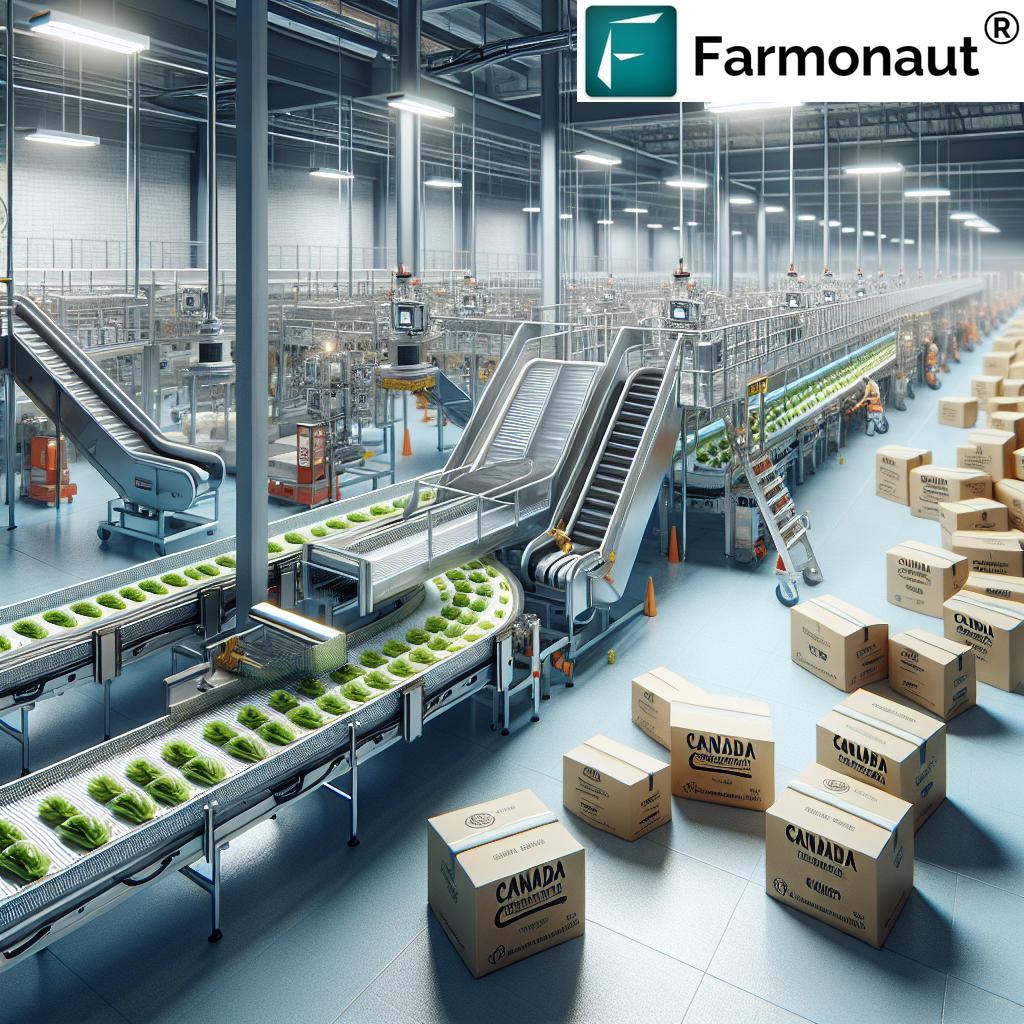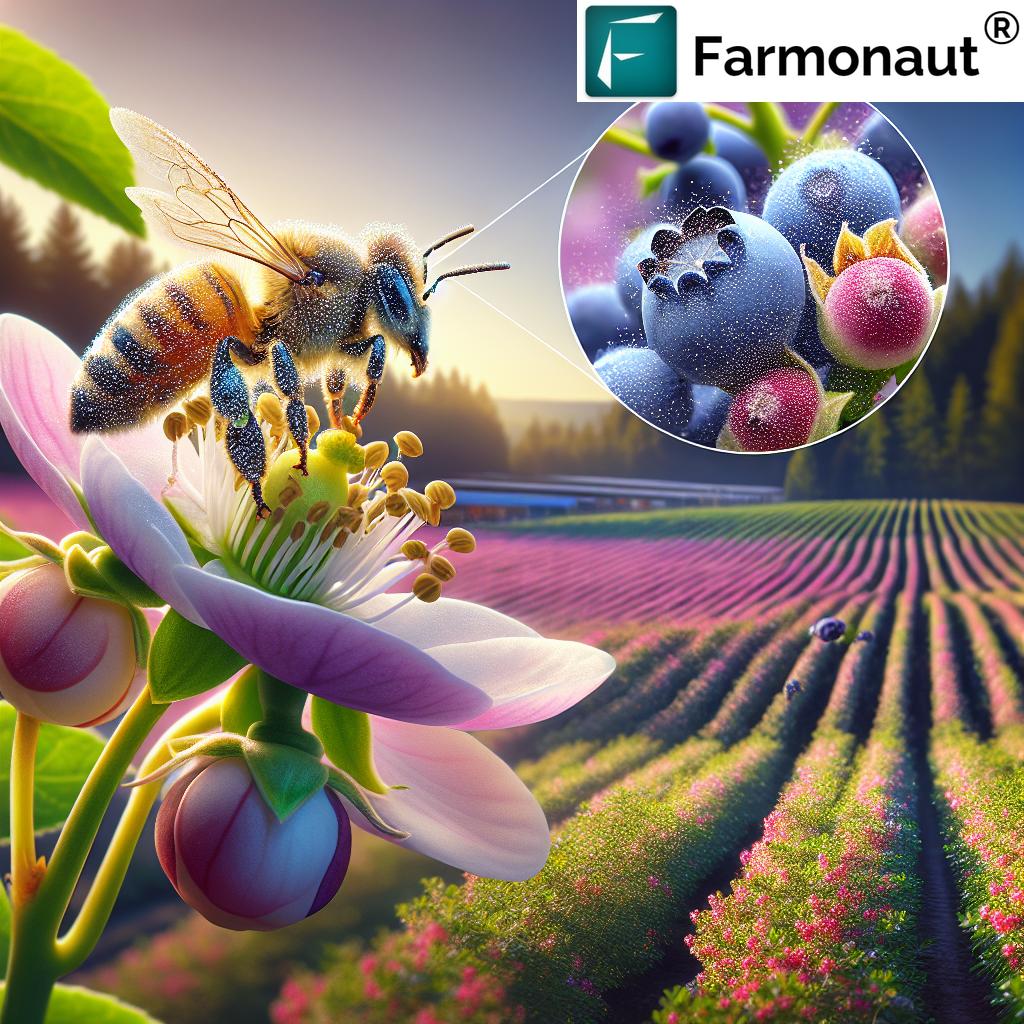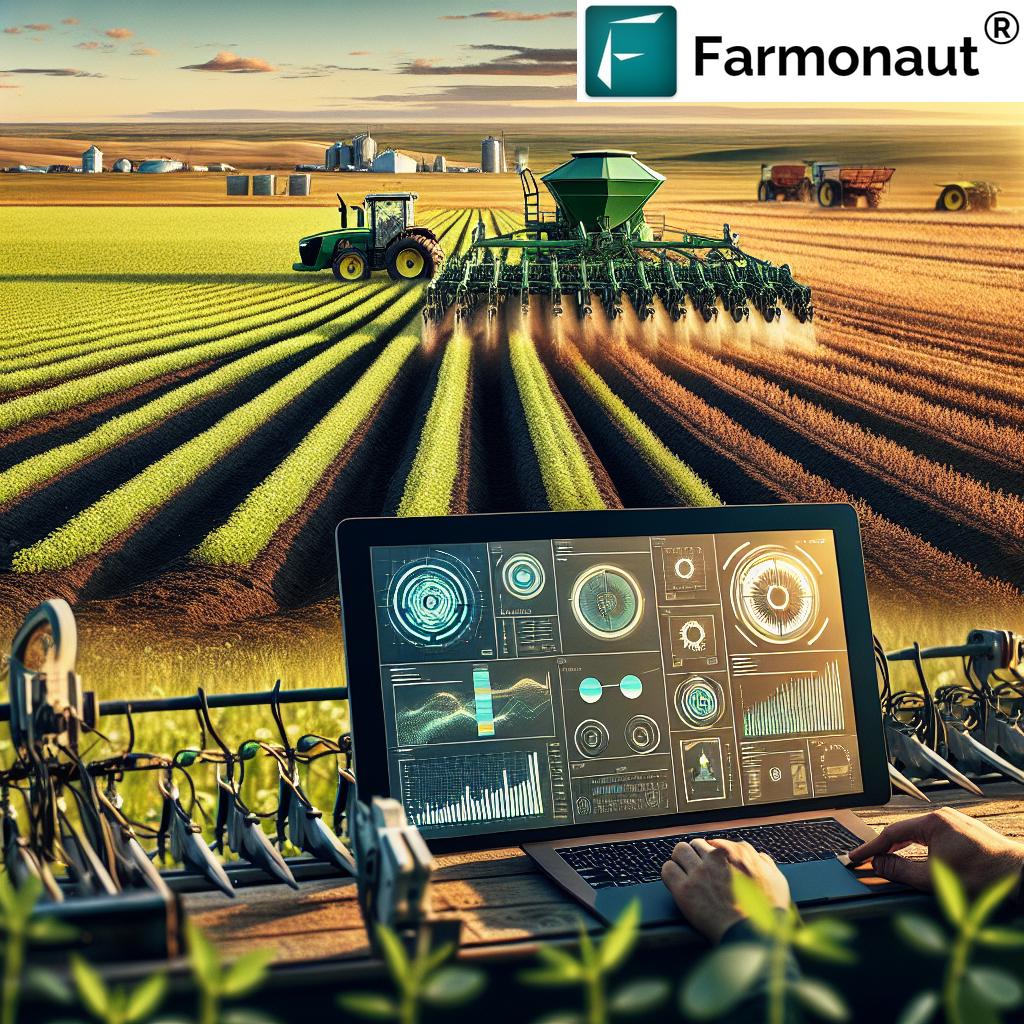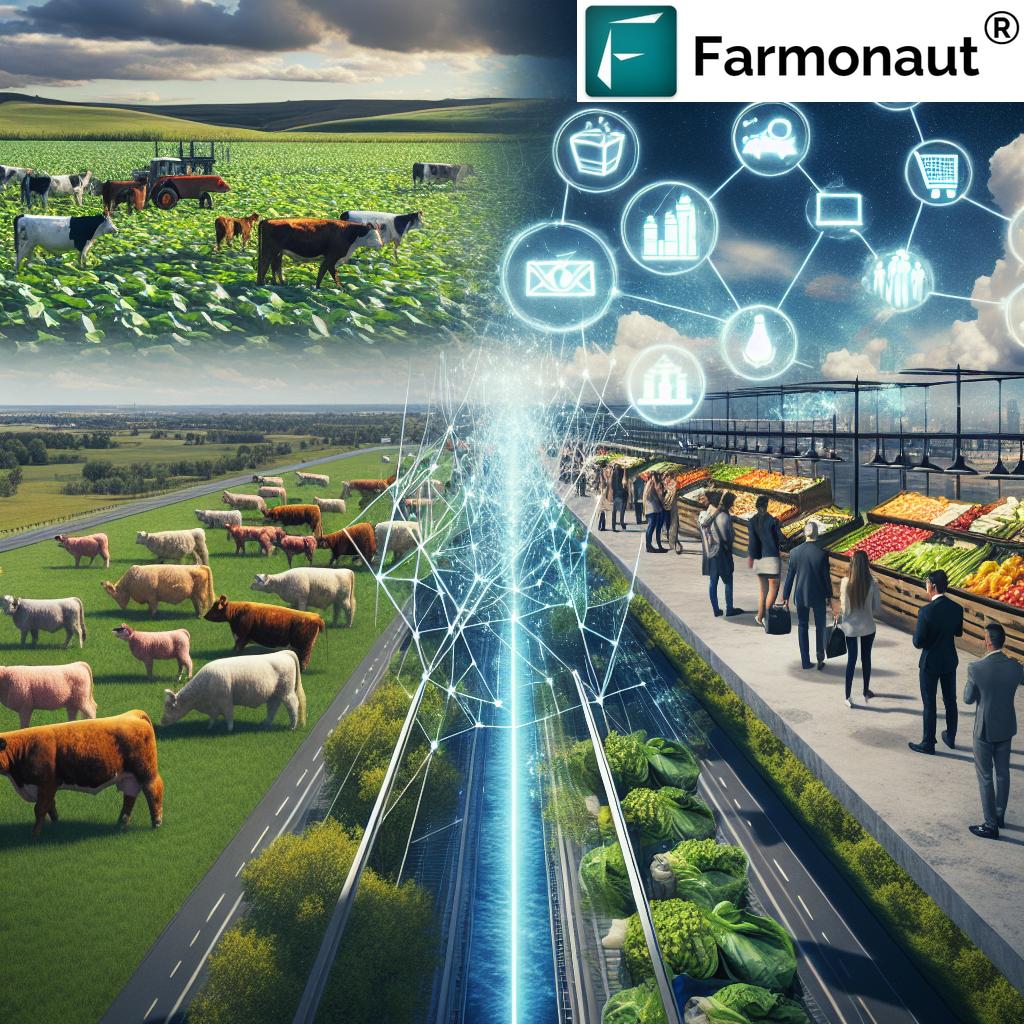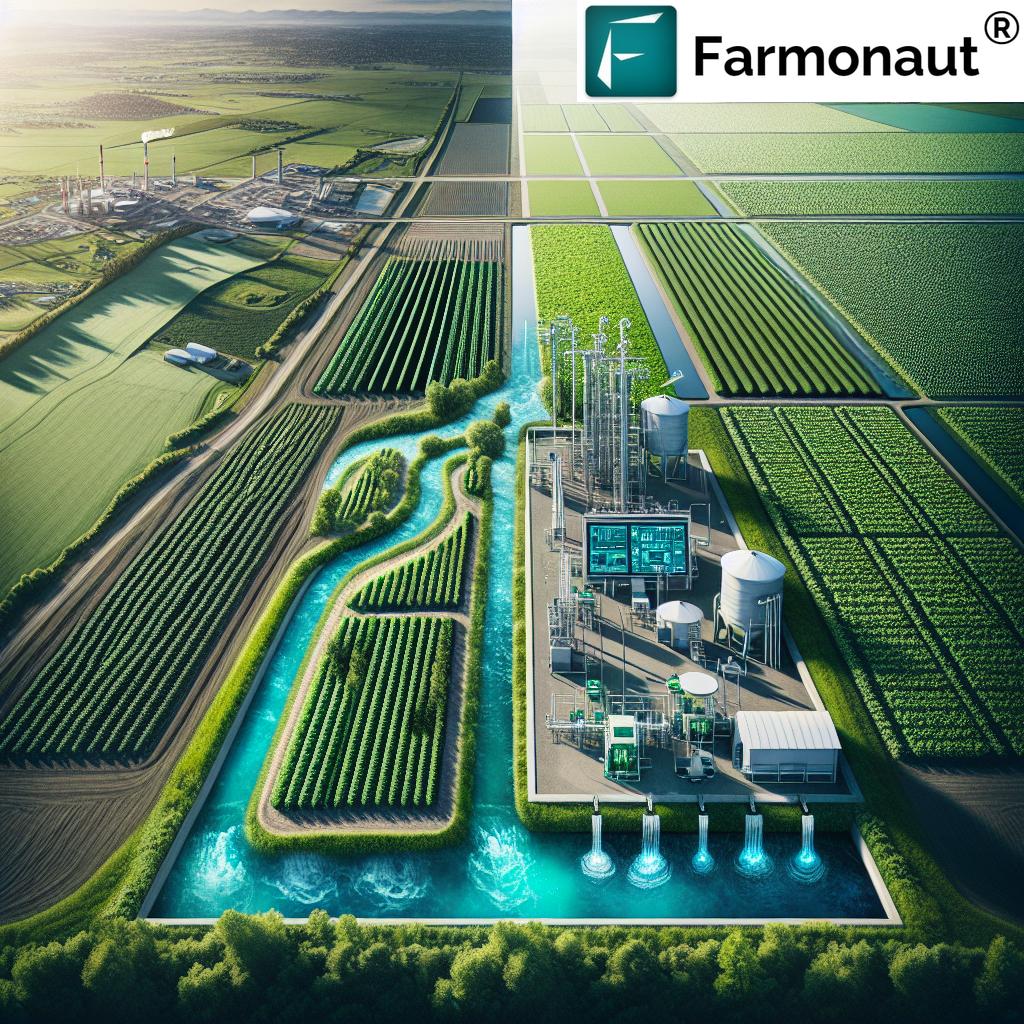Canada Agriculture Export: Top 7 Growth Trends 2023
“Canada’s agri-food exports reached a record $82.2 billion in 2023, up 9% from the previous year.”
Introduction: Canada’s Natural Wealth & Agri-Food Leadership
Canada’s vast expanse, stretching from the rich soils of Prince Edward Island to the resource-laden provinces of the West, is synonymous with natural wealth. Minerals, energy, forestry, and especially agriculture underpin Canada’s global reputation. In recent years, the canadian agri-food sector has become a powerhouse, recognized for its export potential, dedication to innovation, and the courage to address modern sustainability challenges.
By leveraging our immense agriculture resources, sophisticated trade infrastructure, and a reputation for gold-standard food safety, we are poised to transform not only our national economy but also feed a growing world. Yet, with shifting global markets and escalating labour shortages in agriculture, strategic moves are imperative if we are to cement our place as an export leader in sustainable food systems.
This blog provides an in-depth analysis of the Canada agriculture export landscape in 2023, focusing on trends, sector challenges, and strategies that will power our next decade of “agriculture growth in Canada.”
Canadian Agriculture Export Sector Overview in 2023
Let’s take a closer look at the canadian agri-food sector: By 2023, this industry accounted for 7% of national GDP and supported 2.3 million jobs—close to one out of every nine Canadians. This is a notable increase from 2017, when the sector made up 6.7% of Canada’s GDP and provided over two million jobs.
The significance of agriculture jobs in Canada extends far beyond the field. We see the farm-to-fork supply chain—encompassing production, processing, trade, logistics, and technology—underpinning both rural communities and urban food industries.
Canada’s Export Milestones & Free Trade Advantages
- Canada’s agri-food exports hit a record $82.2 billion in 2023, marking 9% growth from 2022.
- Global trade access through 15 international free trade agreements unlocks markets for Canadian goods in over 50 countries.
- Continued investment in food processing technologies canada has diversified our export basket—wheat, canola, pulses, and value-added foods remain at the core.
However, even with these strengths, Canada’s global market share has declined—dropping from fifth to seventh place in worldwide agri-food exports. If current trends persist, we risk falling to ninth by 2035 (RBC 2025 Report).
Why the slip? Despite a quadrupled export value since 2000, global competition is eroding our relative advantage. This highlights an essential truth: the country is not fully activating its canada agriculture export potential.
Senate Perspectives and Policy Vision for Exports
The Senate has played a crucial role in shaping Canada’s agriculture growth vision. As noted by Senator Mary Robinson—whose family has practiced farming on Prince Edward Island since 1810—the sector’s evolution is deeply rooted in both heritage and modern innovation. Her insights stress that:
- Canada must “unlock our enormous export potential” through private sector-led strategies and public investment in trade.
- The Advisory Council on Economic Growth report (2017) called for $75 billion in agri-food exports by 2027, emphasizing sustainable growth, workforce resilience, and technology incentives.
- Prioritizing infrastructure upgrades and reducing digital gaps are mission-critical for a globally competitive export sector.
- We need to address the “innovation paradox”—Canada ranks eighth in innovation input but only twentieth in innovation output (i.e. translating R&D into farm-level solutions).
Canada Agriculture Export: Top 7 Growth Trends 2023
1. Crop Diversification & New Export Markets
We have seen rapid crop diversification. Canadian growers are expanding into pulses, lentils, organic produce, and specialty grains. This aligns with our new trade agreements, enabling access to emerging Asia-Pacific, Middle Eastern, and European markets.
- Demand for plant-based proteins and specialty crops is surging globally.
- Canola, soybeans, and chickpeas—once domestic staples—now headline global food innovation trends.
2. Sustainable Food Exports & Environmental Stewardship
Sustainable agronomy is no longer optional. Sustainable food exports are rapidly becoming prerequisites in markets such as the EU and Japan.
- Stringent regimes for carbon footprinting, traceability, and eco-labeling offer higher margins and increased trust.
- Learn about carbon footprinting technology for Canadian farms—these tools support compliance and branding for eco-conscious global buyers.
3. Innovation in Agri-Tech and Digital Agriculture
The canadian agriculture innovation drive is reshaping productivity. Technologies such as satellite monitoring, AI-based advisory systems, and blockchain traceability streamline operations, optimize resource use, and mitigate risk.
- Farmonaut’s precision monitoring enables real-time crop health analysis, tailored advisories, and transparent farm-to-fork tracking. Explore the benefits of product traceability for Canadian agri-food exports.
4. Food Processing Technologies Canada & Value-Addition
Stronger investment in food processing technologies canada turns raw harvest into high-value food products. This not only captures greater share of export value but also diversifies Canadian offerings—from frozen foods to nutraceuticals.
- Modern agri-processing boosts shelf life, traceability, and export competitiveness.
- Learn how large-scale farm management apps integrate with value-chain optimization.
5. Closing Labour Shortages in Agriculture
A critical barrier is labour shortages in agriculture, impacting nearly 40% of Canadian farms in 2023. Automated machinery, AI-powered scheduling, and improved working conditions are crucial to attracting and retaining talent.
- Canada’s competitive future depends on investing in workforce training, digital skills, and technological adoption.
6. Infrastructure Expansion & Digital Gap Reduction
Efficient trade infrastructure is vital for moving goods from rural Canada to global trade hubs. Upgrades to transportation, cold chain logistics, and digital connectivity are enabling:
- Faster, more reliable exports,
- Expanded market share in perishable and processed food goods,
- Support for pandemic-resilient supply chains.
7. Export Market Access, Safety, and Brand Leadership
With 15 international trade agreements and a robust food safety regime, “Product of Canada” remains a mark of trust worldwide. Blockchain-based transparency (see traceability benefits here) strengthens our sustainability and anti-fraud efforts, making us a leader in conscious consumer markets.
“Labour shortages affected 40% of Canadian farms in 2023, impacting export capacity and sector growth.”
Challenges and Opportunities: Innovation, Labour, and Sustainability
Labour Shortages in Agriculture: A Ticking Clock
Nearly 40% of farms faced labour shortages in agriculture in 2023—overwhelming family farms, primary producers, and food processors. This not only risks farm incomes but also limits Canada’s ability to realize its agri-food export potential.
- Short-Term Solutions: Increasing immigration, streamlining labour mobility between provinces, and incentivizing digital skills among youth.
- Long-Term Strategies: Scaling automation, investing in agri-tech, and improving remote (rural) working conditions.
Bots, drones, GPS-guided tractors, and satellite-powered advisory can all help. Check out how fleet management technology from Farmonaut helps Canadian agribusinesses run efficient, safe, and cost-effective farm operations.
Canada’s “Innovation Paradox”
Canada is an innovation leader in inputs (research, funding, education), ranking eighth globally, but only twentieth in outputs—meaning we lag behind in translating innovation into on-the-ground results that drive export competitiveness.
- Poor adoption of new tech bottlenecks productivity and limits market share in higher-value categories.
- Policy alignment, better incentives, and partnerships with agri-tech providers can help close this gap.
Digital Transformation: The Missing Link for Rural Canada
Vast regions—especially rural communities in provinces like Prince Edward Island—face digital gaps that delay agri-tech adoption. High-speed connectivity, cloud analytics, and AI-driven apps are critical to maximizing yields, reducing waste, and improving rural quality of life.
- Farmonaut provides API and app-based access to satellite and weather analytics for any farm in Canada:
Learn about API Access |
API Developer Docs
Agri-Tech & Digital Transformation: Bridge to Sustainable Growth
Adoption of digital solutions, next-gen food processing technologies, and connected farm infrastructure is at the core of agriculture growth in Canada—delivering efficiency gains and enabling processors to meet new trade and food safety regulations.
- Real-time farm data delivers custom irrigation, fertilizer, and pest control decisions.
- Automated monitoring increases yields and reduces environmental impact.
- Traceability and compliance technologies allow Canadian exporters to command premium prices in tight, regulated international markets.
- Download Farmonaut Apps for Android and iOS:
-



Farmonaut: Empowering Canadian Agricultural Innovation
Farmonaut offers game-changing agricultural technology—designed for rural and urban settings across all Canadian provinces. Our satellite-based crop health monitoring, AI advisory, and blockchain traceability empower farmers, agribusinesses, policymakers, and food companies to achieve sustainable growth, transparency, and profitability.
- Precision Agriculture: Harnessing real-time NDVI, soil moisture, and pest detection ensures no input or environmental resource is wasted.
- Crop Advisory Systems: AI-powered insights—tailored to local climate, crop, and market—boost productivity levels and income.
- Blockchain-Driven Traceability: Global buyers demand trust and accountability. Farmonaut’s solutions unlock new export opportunities for ethical and sustainable Canadian foods.
- Resource & Fleet Management: Detailed tools support primary agriculture and large-scale plantation management for higher farm credit eligibility and safer operations.
- Carbon Footprinting: Exporters leverage live carbon data for compliance, product branding, and improved market access.
Our commitment aligns with the Canadian vision—empowering everyone from the next generation of farmers and agri-business leaders to multinational food exporters. Get more information about Farmonaut’s digital services by visiting our main app page.
Table: Top Agricultural Export Growth Trends Overview 2023
| Trend/Category | Estimated 2023 Growth (%) | Key Drivers | Strategic Recommendations |
|---|---|---|---|
| Crop Diversification & Specialty Markets | 11% | New trade agreements, changing consumer diets | Expand into pulses, plant-based proteins, invest in market development |
| Sustainable Food Exports & Carbon Footprinting | 8% | Eco-certification, regulatory demand | Adopt carbon-tracking tech, pursue sustainability incentives |
| Agri-Tech Adoption (AI, Satellite, Blockchain) | 13% | Innovation incentives, digital literacy | Provide training, accelerate technology access to rural farms |
| Food Processing & Value-Addition | 10% | Tech upgrades, urban market growth | Invest in modern processing, expand product lines |
| Workforce Management/Automation | 6% | Labour shortages, tech diffusion | Subsidize automation, improve working conditions |
| Infrastructure & Digital Connectivity | 9% | Rural broadband, logistics | Fund transport, cold chains, and rural internet |
| Export Market Access/Safety & Brand | 7% | Trade agreements, compliance, transparency | Adopt traceability, certify with food safety regimes |
Forward-Thinking Strategies for Sustainable Growth
- Invest in Food Processing: Canadian agri-food exports will multiply if we modernize processing facilities, leverage AI-driven food safety, and diversify product offerings for global consumers. Modern plants enhance job quality and boost net income for farms.
- Close the Digital Gap: Supporting rural areas and family farms—like those on Prince Edward Island—with high-speed connectivity will ensure every Canadian grower and processor can access and profit from digital agriculture services.
- Unlock More & Safer Export Pathways: Implementation of blockchain traceability and food safety technology instills trust, expands our access to premium markets, and strengthens Canada’s reputation as an export leader. Discover product traceability systems here.
- Innovate for Labour Resilience: Use smart fleet management, collaborative robotics, and advanced workforce analytics to keep our farms growing even as labour landscapes shift. Read about fleet management solutions here.
- Strengthen Credit and Insurance Access: Satellite-based farm data strengthens the case for agriculture loans and insurance, reducing risk for financial providers and opening more capital to primary agriculture. See how satellite verification improves farm credit.
- Advance Sustainability and Compliance: Exporters who monitor and minimize their carbon footprint can target high-value, eco-conscious buyers and stay compliant with new trade rules. Explore carbon footprinting solutions.
Frequently Asked Questions (FAQ)
What are the main agricultural exports from Canada?
Canada’s leading agricultural exports include wheat, canola, pulses, soybeans, beef, pork, and processed foods. Export diversification into organics and specialty crops is increasing.
Why is Canada’s global agriculture export ranking slipping?
Although Canada’s export value continues to grow, our market share is declining due to rapid competition and a lag in adopting the latest agri-tech and food processing innovations. Addressing labour shortages and increasing investment in infrastructure and technology are critical to regaining our top-five position.
How can technology help solve labour shortages in Canada’s agriculture sector?
Digitization, automation, and satellite-based advisory systems reduce manual workloads, improve efficiency, and attract tech-savvy workers. Robotics, fleet management, and digital traceability all play a role in modernizing Canadian farming.
What initiatives support sustainable food exports in Canada?
Canada pursues sustainability through initiatives like carbon footprint tracking, eco-labeling, and blockchain-based supply chain transparency. These support compliance with global regulations and appeal to premium export markets.
How does Farmonaut empower Canadian agriculture exports?
Farmonaut delivers accessible, affordable precision agriculture tools—satellite crop monitoring, AI-based advisory, blockchain traceability, and resource management—to farmers, agribusinesses, and governments across Canada, promoting yield increases, sustainability, and transparency.
Where can I access Farmonaut’s digital agriculture solutions?
Farmonaut’s platform is accessible via web, android, iOS App, and API integrations, reaching all farming scales and types.
Conclusion & Next Steps
Canada sits at a pivotal crossroads: rich in natural wealth and blessed with innovative minds, yet facing urgent labour shortages, infrastructure needs, and fierce export competition. To reclaim and expand our global leadership in the canadian agri-food sector, we must decisively address digital transformation, workforce development, and sustainable food exports.
By investing in smart agri-tech, embracing sustainability, and leveraging the newest digital infrastructure—from the farms of Prince Edward Island to the food-processing hubs of Ontario and beyond—Canada can unlock the next era of “agriculture growth in Canada.” Let us support our growers, processors, and exporters so that Canada’s agriculture exports become a recognized benchmark for safety, innovation, and environmental stewardship worldwide.
Explore Farmonaut’s full suite of satellite-based agriculture management services, traceability, and carbon monitoring tools—join the digital farming revolution here.
Farmonaut Subscription Plans
Choose a subscription plan that fits your farm’s needs, whether you manage a single field or operate large-scale plantations. Farmonaut’s pricing is designed for flexibility, scalability, and affordability, accommodating both individual growers and enterprise users. Activate the power of precision farming with satellite insights, AI-based advisories, and real-time data. See our pricing table below:
Canada Agriculture Export: Sector Summary
Canada’s natural wealth shines brightest in the agri-food sector—anchored by innovation, export prowess, and sustainable practices. Canada agriculture export growth in 2023 has delivered record-value shipments, more jobs, and increased market diversification, yet rising labour shortages and lagging digital infrastructure demand urgent attention. Key growth drivers include modernization of food processing, agri-tech adoption, and opening new trade partnerships—especially for sustainable and traceable food products. Farmonaut stands apart by making high-tech, satellite-driven farm management accessible and affordable for every Canadian farmer, researcher, and policymaker. As we collectively address innovation gaps and global challenges, Canada is poised to lead as a trusted provider of safe, sustainable, and high-value foods worldwide.






